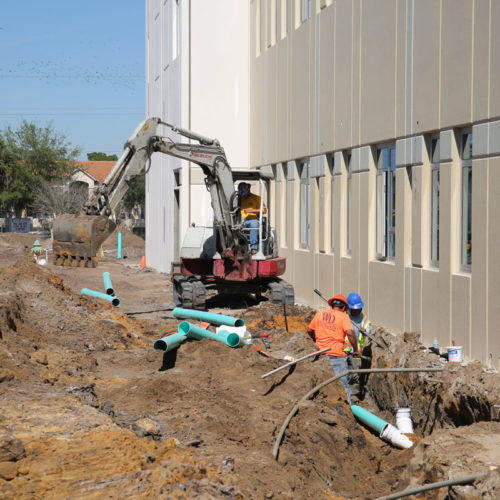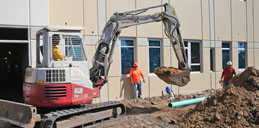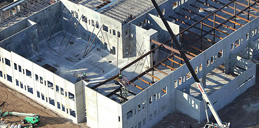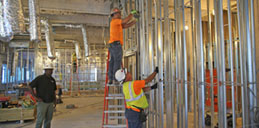What Will Construction Look Like In The Future?
 When you take a look at most modern cities today, you will likely notice an eclectic mix of old and new buildings that not only showcase the differences in design, but the hallmarks of change in a technologically advancing world. Technology has allowed us to build stronger, more energy-efficient buildings that are reaching far greater heights than ever thought possible. And this pursuit will likely continue to change the way construction will look well into the future.
When you take a look at most modern cities today, you will likely notice an eclectic mix of old and new buildings that not only showcase the differences in design, but the hallmarks of change in a technologically advancing world. Technology has allowed us to build stronger, more energy-efficient buildings that are reaching far greater heights than ever thought possible. And this pursuit will likely continue to change the way construction will look well into the future.
Smart construction
Construction is one of the most dangerous jobs in the world. On average, 93 construction workers are killed each week in the U.S., according to the Occupational Safety & Health Administration (OSHA). And increasing worker safety is among the top priorities of the construction industry. Over the next decade you will likely see construction equipment and tools become smarter as they are integrated with Internet of Things (IoT) technology and sophisticated software that will power building construction from the ground up. We will be able to build smarter at a lower project cost with an increase in worker safety.
3D printing
Imagine having the ability to fabricate an entire building on-demand in just a few hours at the touch of a button. Well, using a giant robotic 3D-printer, researchers at MIT did just that. Their “Digital Construction Platform” was able to successfully construct a dome structure that was 50-feet in diameter at a height of 12 feet. As this technology matures over the next several decades, construction firms will be able to pre-load a wide range of materials into 3D printers to construct the most sophisticated building of any size or height at blazingly fast speeds.
 Construction drones
Construction drones
Emerging construction technology will enable construction firms to build more efficiently with fewer resources. While drones in construction are in its infancy, they will likely be standard equipment in the near future. Construction firms are beginning to deploy drones on job sites instead of human surveyors that collect more data with greater accuracy to help manage resources and materials and minimize project delays.
Zero construction waste
Eliminating waste at construction sites is another industry top priority. The American Institute of Architects (AIA) estimates that anywhere from 25% to 40% of construction materials are thrown away at a cost of $160B annually. As a result, AIA New York has drafted “Design Guidelines for Zero Waste” that architects and construction professionals across the country can adopt to build and manage resources more efficiently with a goal of eliminating all waste at construction sites by 2030.





